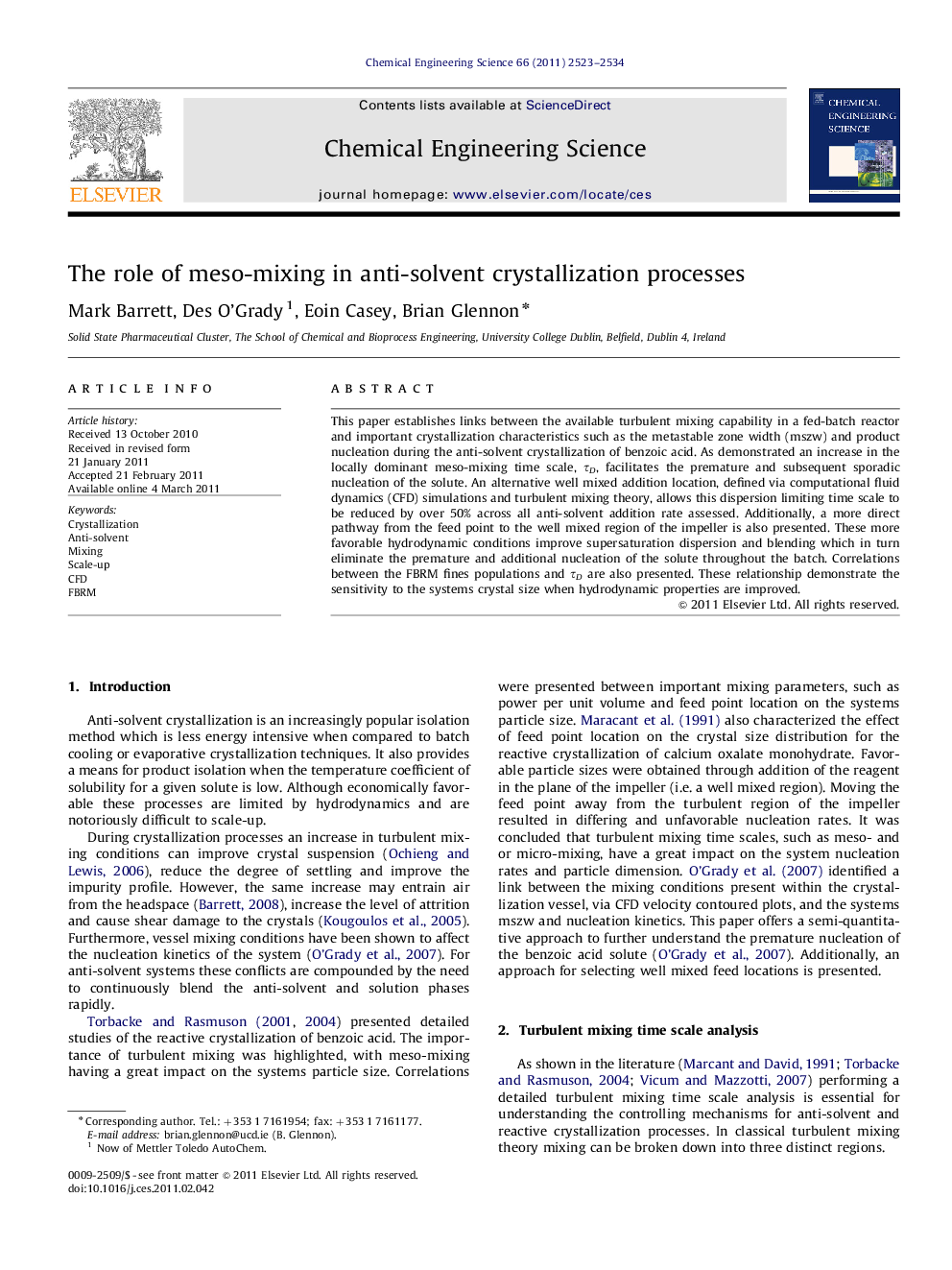| Article ID | Journal | Published Year | Pages | File Type |
|---|---|---|---|---|
| 156331 | Chemical Engineering Science | 2011 | 12 Pages |
This paper establishes links between the available turbulent mixing capability in a fed-batch reactor and important crystallization characteristics such as the metastable zone width (mszw) and product nucleation during the anti-solvent crystallization of benzoic acid. As demonstrated an increase in the locally dominant meso-mixing time scale, τD, facilitates the premature and subsequent sporadic nucleation of the solute. An alternative well mixed addition location, defined via computational fluid dynamics (CFD) simulations and turbulent mixing theory, allows this dispersion limiting time scale to be reduced by over 50% across all anti-solvent addition rate assessed. Additionally, a more direct pathway from the feed point to the well mixed region of the impeller is also presented. These more favorable hydrodynamic conditions improve supersaturation dispersion and blending which in turn eliminate the premature and additional nucleation of the solute throughout the batch. Correlations between the FBRM fines populations and τD are also presented. These relationship demonstrate the sensitivity to the systems crystal size when hydrodynamic properties are improved.
